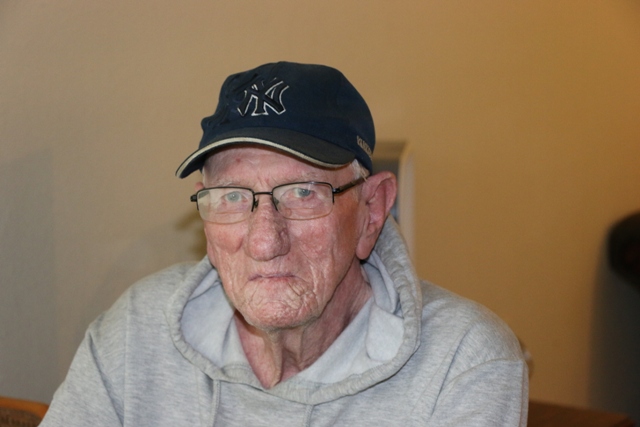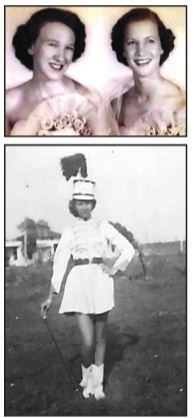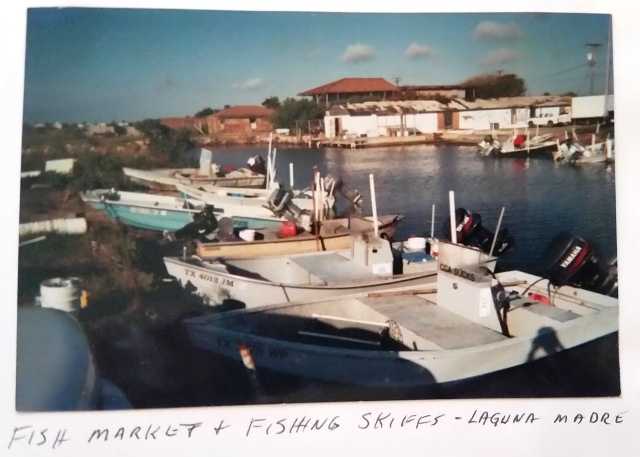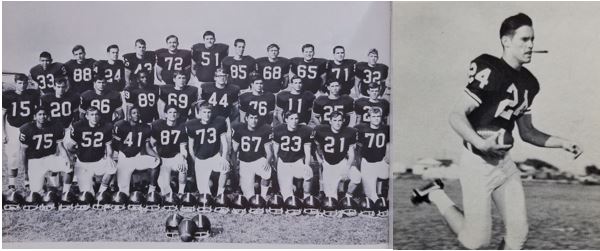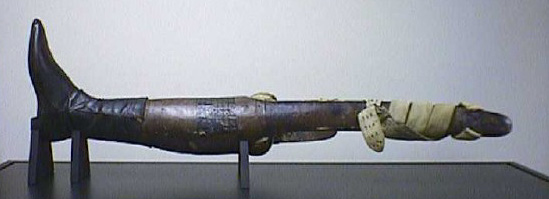To preserve the rich history of Flour Bluff in print, The Texas Shoreline News, will run historical pieces and personal accounts about the life and times of the people who have inhabited the Encinal Peninsula. Each edition will feature the stories gleaned from interviews held with people who remember what it was like to live and work in Flour Bluff in the old days. You won’t want to miss any of these amazing stories.
“It was a mass of oil wells back then,” Bobbie Kimbrell said, speaking of Flour Bluff in the late thirties and early forties. “Right where SPID crosses Waldron. That’s where most of the oil derricks were. I was surprised HEB built where it did,” he said.
“One of the wells right at the causeway blew out and burned for a long time. When I was living on North Beach in 1941, it was still burning, and I could see the flare from all the way over there,” Kimbrell said. He explained that the Navy had to help put it out because it was affecting the training of the pilots. “The student pilots flew from Corpus Christi to San Antonio and back. They didn’t even need their compass or anything. They could see the light all the way from San Antonio. It was killing their flying with instruments, so the Navy had the fire put out.”
Bobbie Kimbrell is one of six children, four girls (Carmelita, twins Annette and Jeanette, and Virginia) and two boys (Acie and Bobbie), most of whom are gone. He speaks with a great deal of pride when talking about his younger sister Virginia, now 84, who worked for the Corpus Christi Fire Department under Chief John Carlisle. “She did everything. She served as dispatcher, made out the payroll, took care of insurance, and handled grievances. The chief didn’t even have to be there,” he chuckled.
After graduating Flour Bluff High School in 1947, Kimbrell continued his work as a commercial fisherman. He even did some roughnecking. In 1949, he went into the United States Army during the Korean Conflict. Though he spent about 6 months in Okinawa, most of his training took place at Ft. Hood. In 1951, he got out of the army and returned to fishing. He met and married Helen Garcia in 1960. “She was from San Benito, Texas, and was Rachel Krause’s aunt. She was her aunt but was at least 20 years younger. Rachel was married to Ralph Krause, who owned Pick-a-Rib in Flour Bluff,” said Kimbrell.
Bobbie and Helen had three daughters, Rosemary Kimbrell Leatherwood, Edith Ella Kimbrell Stephenson, and Laura Lee Kimbrell Trueblood. “I have lots of grandkids and even a few great grandkids,” said Kimbrell. “All my girls still live in Corpus Christi.” One has to wonder if Bobbie’s daughters knew just how tough their dad’s life had been trying to make a living as a commercial fisherman, something he did until 1999 when he was nearly 70 years old.
The following is a story written by Bobbie Kimbrell about a memory he has of fishing with his dad:
It was the summer of 1944. My dad and I lived in a little camp on the shoreline of the lagoon where Glenoak runs into Laguna Shores. We would go rod and reel fishing nearly every morning. We got up about an hour before the crack of dawn, had coffee, and ate breakfast. Then we got in the 16-foot skiff and tried to make it to the Humble Channel before the sun came up.
The night before we had used a minnow seine to catch about fifty shrimp, using the Coleman lantern for light. As I rowed the boat, Dad stood in the stern and helped me along with the push pole. We had a 50-hook trotline set out on a sand bar beside the channel, and we noticed in one section the main line was under water. Dad picked it up, and there was a 5-foot alligator gar on it! We decided to leave it on until we finished fishing because it would have taken a long time to tie it down and release it.
We tied up to the 4 X 4 channel marker just as the sun was about an inch over the horizon of Padre Island. We were on the east side of the channel so that our backs would be toward the sun. After the sun was completely up, it was bright and red as blood with orange streaks above. Dad said, “Turn around and look at the sun. It’s going to be a hot one today.”
We put a handful of the shrimp in a little bucket of water so that we wouldn’t have to get one out of the wooden bait box we had tied alongside. Dad caught a nice trout on his first cast. It was about a 3-pounder. While I strung it up on the stringer, Dad had already caught another trout and then started catching one nearly every cast. It kept me busy just stringing them up. Most of the trout were about 12 to 14 inches long. Dad didn’t catch anything the next couple of casts, so he told me to start fishing and see if I could catch one. One of the shrimp was nearly dead, so instead of hooking it through the head, I just wormed it on, threw it out, and caught one the first cast.
The fishing had slowed down, but both of us would catch one every once in a while. About that time, a wade fisherman waded out from the shore. At that time, a lot of fishermen waded down beside the channel. When the wade fisherman saw the trotline, he went over and picked up the main line. When that alligator gar started flushing around, it scared the man so bad that he hollered for my dad to come and get him. Dad told the man that the gar was hooked, so he didn’t have to worry about it, but the man was still scared and took off for the shoreline. He got in his car and left.
By that time, we had run out of shrimp, having caught about 30 trout. So, Dad put on a small Dixie silver spoon and would catch one every once in a while. I asked if I could put on a spoon, but he said, “No, your line is pretty weak, and if you hook one, you might lose the spoon.” After a while, he said, “Go ahead and put that big No. 7 Johnson spoon on because I don’t ever use it anyway.”
After a while, I hooked a sure ‘nough good one! Its head came clear out of the water trying to throw the spoon loose. With the sun shining into its open mouth, it was a brilliant, golden color. It went back down and made a run for it as I burnt both thumbs a little trying to thumb it down since my reel didn’t have a drag on it. After a while, I got it coming back toward the boat with Dad standing by with the dip net. Just as Dad stooped over to net it, it just threw the hook and swam off right before our eyes.
“Damn it!” Dad said. “I bet that sow would have weighed 10 pounds!”
Later I got to thinking that at least I hadn’t lost the spoon, and I didn’t know if Dad would have lived it down if I had caught the biggest fish. About that time where the channel ended into shallow water, the water started whirling up, and the fish whole end of the channel turned muddy. Dad said, “Jerk those fish on the stringer back into the boat. That might be a shark.”
Whatever it was, we could see part of its back as it was nearing the boat. I asked Dad if I should stomp on the bottom of the boat and scare it off. Dad said, “Hell, no! It might turn over the boat.” Anyway, it swam on off, much to our satisfaction. We both got to thinking later on that it was a manatee because we saw no fins on it, and it was known that sometimes manatees come up the channels.
By then the wind had got up a little from the southeast, so we untied and hoisted the sail. I steered as Dad gutted and gilled the trout. We put the fish in a No. 2 washtub, took them up to the Nelson fish pick up station at the old Don Patricio Causeway and sold them. We had 40 pounds at 15 cents per pound.
Tom Nelson, the fish dealer, said, “Thanks for the fish. Try to catch more tomorrow if you can because the housewives are buying all of them as soon as they come in.” It was during WWII, and meat was rationed, so the housewives were substituting fish for meat.
I forgot to mention that we released the gar, and it swam off. There was no other fish on the trotline that we had baited with 1-inch squares of baby crib rubber sheeting.
When asked who the best fisherman was the he ever met, he did not say it was his dad. Kimbrell thought about it a bit and then answered. “Talking through the years, it had to be Wally Grabowske. He always caught the most. Alvin Barta and Lacy Smith were right behind him though,” said Kimbrell.
“Dad quit fishing and opened the Red Dot Bait Stand with Sherm Hawley. He made better money at the bait stand than he did fishing. He sold it later to Freddy Edgeman, who had a promoter from San Antonio,” said Kimbrell. He remembered the first bait stand being on the Intracoastal near where Snoopy’s sits today. “The city demolished it, but I never knew why,” he said. “Then it was moved to Humble Channel. Edgeman ran it until he died.”
Kimbrell recalled other bits of information about Flour Bluff and its people.
- Gas wells were dug on Pita Island to power the Barney Davis plant.
- The Curriers were the first Hispanic family he can remember in Flour Bluff. Their dad was the swing bridge operator, and they lived on Lakeside near the causeway.
- Nicholson’s Grocery store was owned by John Nicholson and sat where Barton Street Pub is today.
- Killian’s Grocery Store was on Waldron, north of what is now South Padre Island Drive. Constable Jewell Ross had a liquor store next to Killian’s. (Note: According to John Nicholson, grandson of the Nicholson Grocery owner and current owner of Barton Street Pub, “The constable’s office was located in the old building that now houses The Alibi lounge at 948 Waldron. Jewel Ross was the constable. There was a liquor store on the left side and the constable’s office on the right side. When not doing constable business, or when a liquor customer drove up, he was selling and operating Ross’s liquor store. If you look at the building, you can tell it was two units. This was in the 50’s.”)
- Dunn’s Crossing was the shallow crossing of the lagoon where Yorktown runs into Laguna Shores. “I always thought there should be a historical marker there,” said Kimbrell.
Bobbie Kimbrell still lives in Flour Bluff and can often be seen with his friends having coffee in Whataburger talking about the good ol’ days. “I’ve been through some pretty scary fishing times. If a storm blew in or an unexpected Norther hit, I sometimes thought I wouldn’t make it.”
______________________________________________________________________________________________
Be sure to pick up the next edition of The Texas Shoreline News to read some of Bobbie Kimbrell’s articles about the history of Flour Bluff. Past articles can be accessed at the website, as well.
The editor welcomes all corrections or additions to the stories to assist in creating a clearer picture of the past. Please contact the editor at Shirley@texasshorelinenews.com to submit a story about the early days of Flour Bluff.
